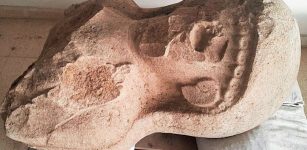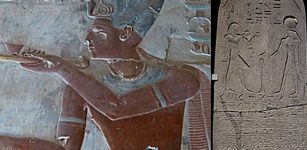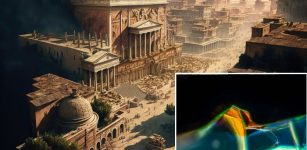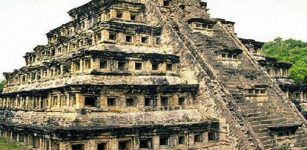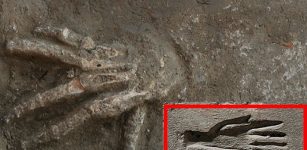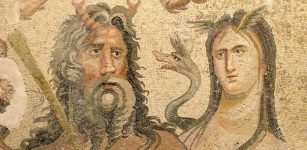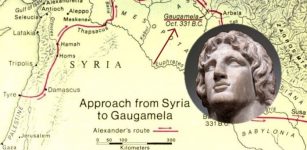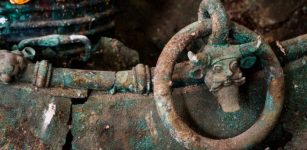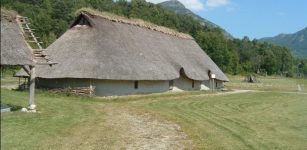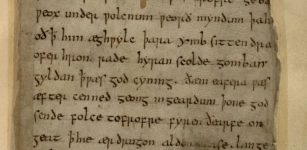Mysterious Medes: Was It An Ancient City Of Ecbatana?
Conny Waters - AncientPages.com - New cultural relics have been revealed during the 70-day long excavations that shed new light on the mysterious capital of Medes, which is widely believed to be in Ecbatana, an ancient city on the site of which stands the modern city of Hamadan in west-central Iran.
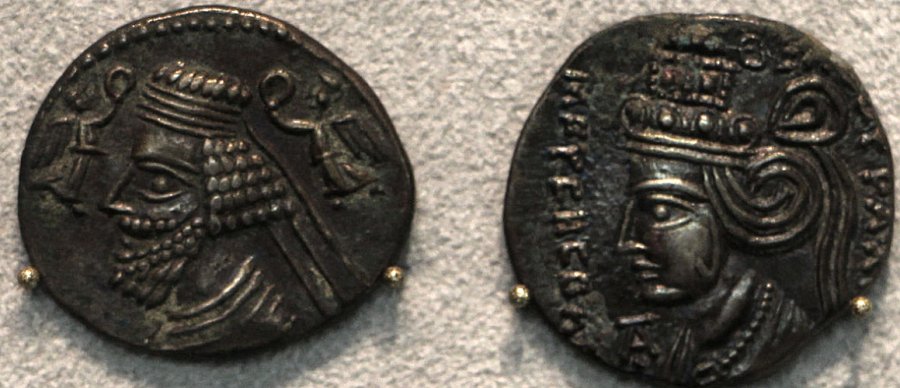 Ekbatana (forse), phraakates e musa, dracma, 2 ac-4 dc ca
Ekbatana (forse), phraakates e musa, dracma, 2 ac-4 dc ca
Ecbatana was subsequently the summer residence of the Achaemenian kings and one of the residences of the Parthian kings. According to ancient Greek writers, the city was founded in about 678 BC by Deioces, who was the first king of the Medes.
“Cultural elements, estimated to date back to Iron Age II C (700 – 586 BC), which was almost concurrent with the Median era (around 678 BC–around 549 BC), were unearthed during the 22nd archaeological season recently carried out in Tepe Hegmataneh (also known as Ecbatana) ….
In this season we seem to have succeeded to answer an old question: ‘Are there any signs of the Median period in Hegmataneh?’ Yes, we have discovered relatively satisfying signs of Median architecture and pottery,” ISNA quoted senior Iranian archaeologist Mehrdad Malekzadeh as saying on Tuesday.
The Greek historian Herodotus described the city in the 5th century BC as being surrounded by seven concentric walls. Ecbatana was captured from the Median ruler Astyages by the Persian king Cyrus the Great in 550 BC, and it was taken from the last Achaemenian ruler by Alexander the Great in 330 BC, Tehran Times writes.
“We focused on exploring a place in front of the current and temporary Hegmataneh Museum, where French experts had opened a workshop in 1913, known as the Chaal Shotor (“Camel's Hole”), we carved three trenches measuring 2.5 by 2.5 meters…. and at a depth of 320 cm, we found the remains of a stone wall.”
“We realized that this wall appeared about four meters lower than the architectural relics that [Iranian architects] Dr. M.R. Sarraf and Dr. Masoud Azarnoush had excavated in Hegmataneh in previous archaeological seasons,” he said.
“Dr. Sarraf did not go below that surface level he had worked on, and Dr. Azarnoush also believed that the first ridge of architectural remains in Hegmataneh hill was staring (in that specific location), while we managed to show that there are relics about four meters below that surface.”
 Archaeologists have unearthed new cultural relics and architectural vestiges that sheds new light on the mysterious capital of Medes. Image credit: Tehran Times
Archaeologists have unearthed new cultural relics and architectural vestiges that sheds new light on the mysterious capital of Medes. Image credit: Tehran Times
According to a scientific article co-authored by Azarnoush, Tepe Hegmataneh, which located in the eastern edge of Central Zagros mountain range, faces some tricky questions: When and by the order of whom, a “Standard Architectural Pattern (SAP)” was built there? Or, what was the function of SAP?
French Assyriologist Charles Fossey (1869 – 1946) directed the first excavation in Tepe Hegmateneh for six months in 1913. Erich Friedrich Schmidt (1897 – 1964), who was a German and American-naturalized archaeologist, took some aerial photos from Hamedan between 1935 and 1937.
“Specialized tests, such as radiocarbon dating, have not been performed on the newly excavated materials yet, and by performing physical and chemical tests, we can express with a more reliable coefficient of the history of the obtained cultural materials,” Malekzadeh added.
Regarding the importance of Tepe Hegmataneh, Malekzadeh noted “Hegmataneh hill is one of the most important archeological sites [of the ancient times] such as Rome, Athens, Alexandria and Babylon.”
Herodotus writes: “Deioces bade them build for him a palace worthy of the royal dignity and strengthen him with a guard of spearmen. And the Medes did so: for they built him a large and strong palace in that part of the land which he told them [...]. He built large and strong walls, those which are now called Ecbatana, standing in circles one within the other. And this wall is so contrived that one circle is higher than the next by the height of the battlements alone. And to some extent, I suppose, the nature of the ground, seeing that it is on a hill, assists towards this end; but much more was it produced by art, since the circles are in all seven in number. And within the last circle are the royal palace and the treasure-houses.
The main explored in site of the Hagmatāna Hills. source
The largest of these walls is in size about equal to the circuit of the wall around Athens; and of the first circle the battlements are white, of the second black, of the third crimson, of the fourth blue, of the fifth red: thus are the battlements of all the circles colored with various tints, and the two last have their battlements one of them overlaid with silver and the other with gold. These walls then Deioces built for himself and round his palace, and the people he commanded to dwell round about the wall.”
According to the Greek historian Xenophon of Athens (c.430-c.355), Ecbatana became the summer residence of the Achaemenid kings. Their palace is described by the Greek historian Polybius of Megalopolis. He writes that the city was richer and more beautiful than all other cities in the world; although it had no wall, the palace, built on an artificial terrace, according to Livius, a website on ancient history written and maintained since 1996 by the Dutch historian Jona Lendering.
An inscription, unearthed in 2000, indications that Achaemenid king Artaxerxes II Mnemon (404-358) built a terrace with columns in Ecbatana. Some twelve kilometers southwest of Hamadan is Gandj Nameh, where Darius I and his son Xerxes had inscriptions cut into the rock.
Polybius, a Greek historian of the Hellenistic period noted for his work The Histories, tells that the builders used cedar and cypress wood, which was covered with silver and gold. The roof tiles, columns, and ceilings were plated with silver and gold. He adds that the palace was stripped of its precious metals in the invasion of the Macedonian king Alexander the Great and that the rest was seized during the reigns of Antigonus and Seleucus. Later, Ecbatana was one of the capitals of the Seleucid and the Parthian Empires, sometimes called Epiphaneia.
With the outbreak of World War I, the archaeological excavations were stopped at Ecbatana. The first Iranian expedition worked in Tepe Hegmataneh for 11 successive seasons under supervision of Sarraf from 1983 to 2000, these excavations led to discovering some parts of an enclosure and SAP in central, southern and western workshops.
Sarraf could not find reliable answers for the already mentioned questions. The second round of excavation (12th to 15th seasons) was undertaken by Azarnoush for four seasons from 2004 to 2008, the aim of these excavations was “to clarify the dating and stratigraphically sequence of the site”.
Ecbatana is deemed to be remaining a riddle, wrapped in a mystery, for decades or even centuries to come as the site of the ancient city lies partly within the modern city of Hamadan, which has never been excavated before.
Written by Conny Waters - AncientPages.com Staff Writer



